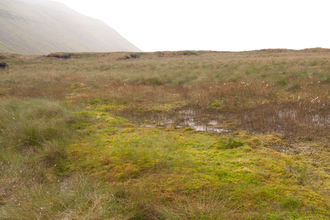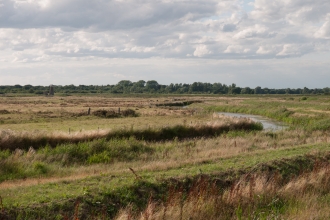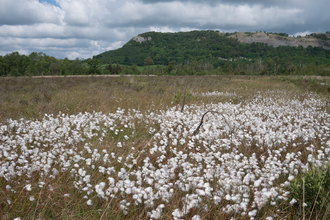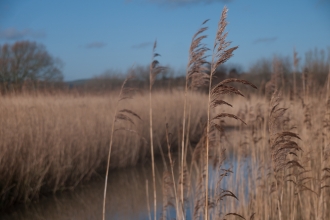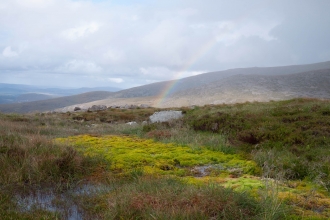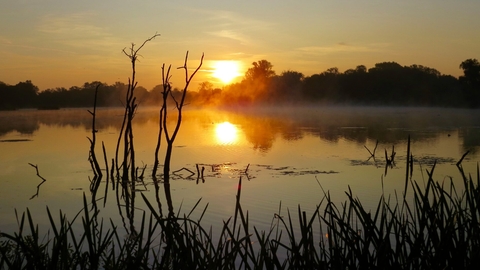
Nene Wetlands, The Wildlife Trust BCN
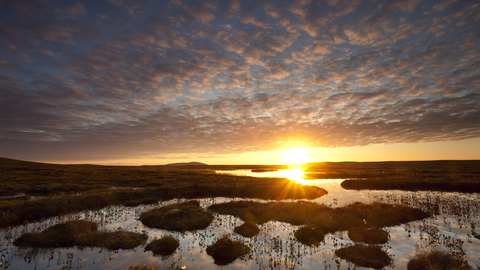
Mark Hamblin/2020 VISION
Wetlands
Wetlands are wonderful places for wildlife
Wetland are places where water and dry land meet - home to a wide range of wildlife, from dragonflies and damselflies to wading curlew and snipe; from carnivorous plants to flitting butterflies. The rain-drenched lands of the UK offer perfect conditions for the formation of wetlands.
The lives of animals, plants and people depend on wetlands being in a good condition. Healthy wetlands store carbon and slow the flow of water, cleaning it naturally and reducing flood risk downstream. They support an abundance of plant life, which in turn provide perfect shelter, nurseries and breeding grounds for wildlife.
A natural solution to climate change
Plant matter steadily decays and accumulates in the waterlogged conditions of wetlands, meaning they are hugely important for holding carbon.
However, the ability of a freshwater wetland habitat to capture carbon varies according to the condition of the wetland. Good management is critical to ensuring that the habitat can store more carbon for years to come. It is also vital that our remaining high-quality wetlands are protected, as it can take decades for restored wetlands to be able to draw down carbon at the same rate as natural wetlands.
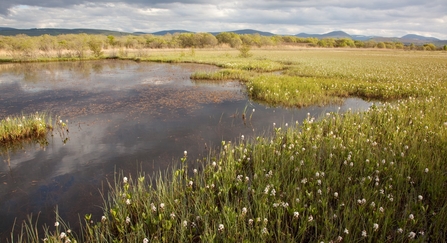
Peter Cairns/2020VISION
Peat is an invaluable habitat
Most wetlands are peat-forming. When the ground is too wet for vegetation to decompose, a dark, organic matter called peat forms. This very slow growing material is an extremely important habitat for plants, such as sundew and marsh violet, which in turn support invertebrate and bird populations.
As well as providing a valuable habitat for wildlife, peatlands are ‘carbon sinks’, removing carbon from the atmosphere and storing it. They’re also vital forms of flood defence and water purification. Peat acts as a sponge, absorbing rain, snowmelt and mist, then gradually releasing it back. This regulates the flow of rivers, reducing flooding after storms and maintaining flow in dry weather. Wetlands filter water too, improving the quality.
How have wetlands traditionally been managed?
Many wetlands are dynamic and if left alone, over long time spans, would develop into a different wetland type, or into woodland. However, the traditional management of wetlands stopped this process, allowing species that live in these areas to flourish and thrive. This included harvesting sedge and reed for thatch, and cutting and drying peat for fuel.
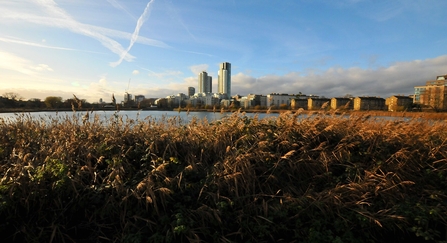
Woodberry Wetlands by Diana Farina
Threats and pressures to wetlands
Wetlands can accumulate carbon for centuries, but in some areas of the UK we have lost over 90% of our wetland habitat.
Between 2006 and 2012, over 1,000 hectares of wetland was converted to artificial surfaces.
In more recent years, the traditional management of wetlands has been replaced by industrial-scale use. Raised bogs especially have been (and in some places still are being) destroyed or degraded through industrial peat-cutting for fuel or use in gardens.
Wetlands vary greatly. Some wetlands are very extensive, such as blanket bog, while others are naturally more localised, such as upland spring and flush.
In other cases, particularly in the lowlands, drainage and industrial-scale peat-cutting has reduced or destroyed many wetlands. Areas of raised bog, fen and reedbed are now a fraction of what they once were.
Some types of wetlands are now legally protected, but many are still not in good condition.
Conservation and recovery
Policies to protect wetlands, such as restricting abstraction (the removal of water), as well as projects to restore them, are important tools to help the UK to build nature-based solutions to climate change.
By reducing drainage and over-abstraction, supporting the return of beavers, and naturalising rivers, wetlands will be able to lock up more carbon, support more wildlife, and provide many other vital benefits like flood prevention!
The Wildlife Trusts campaign to raise awareness of the value of wetland habitats and the threats that they face. We work to prevent further loss of our lowland raised bogs by looking after many areas as nature reserves.
We are currently restoring areas that have deteriorated and working with landowners and farmers to promote wildlife-friendly practices on their wetland areas.

